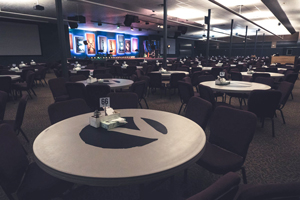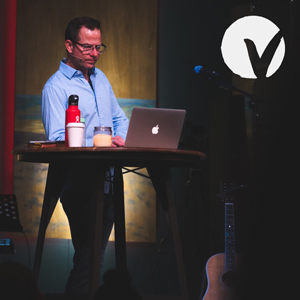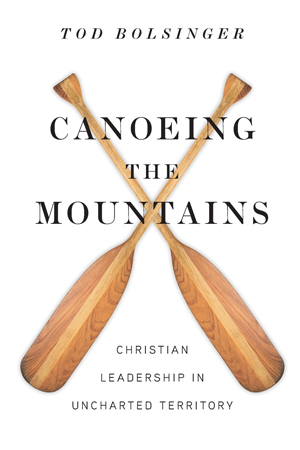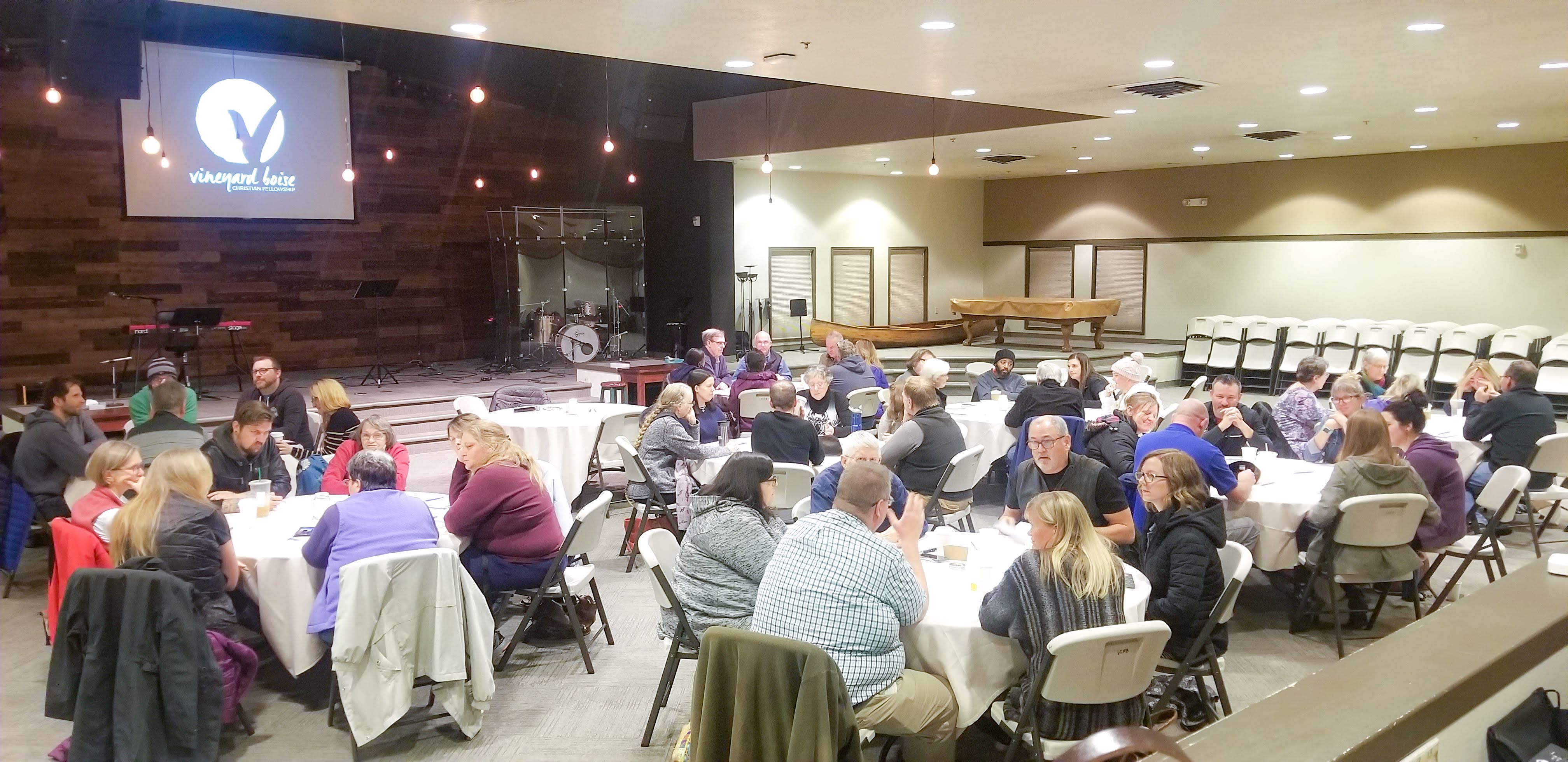My church looked different at the beginning of 2018. Walking into our sanctuary you would have thought that the maintenance staff forgot to remove the round tables that had been brought in and decorated for the Christmas Eve service just a couple of weeks before. The room is pretty sizable for a church in Boise, Idaho. While we certainly aren’t a megachurch, we aren’t a rural chapel either. I’m sure you could have fit 1200 souls if you had sat all of them down in our rows of padded chairs. The six foot round tables had cut the capacity of the room by at least 40 percent.

Sunday morning has been one of my least favorite expressions of belonging to a church. Some of that stems from having worked in a church – actually having worked in this very church – for 12 years. Putting on a Sunday morning service takes a lot of effort. It may be a day of rest for Chick-fil-A workers, but it certainly isn’t for a church staff. But my disconnect isn’t so much about production effort. It’s because I believe the communication flow is lacking. So much of the focus is on a lectern, a pulpit, a stage or a great orator. I don’t think the purpose of church is to listen to a moving message. A faith journey needs to equate to more than just attending a spiritualized Ted Talk.
Church is supposed to be about community. It is about going with family or maybe connecting with others that could be your family. To build those relationships you need opportunities to connect, you need dialog, and you need vulnerability. It is hard for that to happen when you are staring at the back of the heads of the people sitting in the row or pew in front of you and the only time you talk with them is when you are “Passing the Peace” or excusing yourself when you step out into the aisle on the way back to your car.
January 2018 began to change that for us. The lead pastor of our church, who happens to be my brother, announced to our congregation that the tables were actually in our sanctuary to stay. He explained that the leadership team decided they were tired of just talking about better ways to build community. They decided they were going to actually do something significant to help make connections happen within the congregation. Pastor Trevor Estes led the church through a revisioning of what it meant for the church to move forward as a family and what it would mean to our surrounding community.
In a world where success – even in a church – is built on numbers, it was refreshing to be in a faith community that was shifting its focus from expansion to purposely pursuing depth.

My church looked a little different again the following week. Not only were there over 80 large round tables with six chairs around each one (and a bunch of smaller tables around the perimeter for the extreme introverts), but Trevor had replaced the pulpit that had been on the Vineyard stage for over 25 years with a small round pub table. It was a subtle change, but significant. However, the most surprising change was that he had placed a 30-foot long wooden canoe right on the front of the stage. I had no idea what the boat illustrated. I know there are stories about Jesus calming the storm on the Sea of Galilee from a boat, but it was probably one of his disciple’s fishing boats, and certainly not a canoe.

But the illustration for the sermon series that Trevor began that morning didn’t come from one of the four gospels. Instead it came from the two adventurers who were sent by President Thomas Jefferson to explore the uncharted territory west of the Mississippi River. Trevor went on to share that the church leadership team read the book “Canoeing the Mountains” about Meriwether Lewis and William Clark’s journey to the Pacific Ocean. In this account, author Tod Bolsinger shares how Lewis and Clark assumed that the western half of North America would mirror the eastern half. They expected to easily find a river on the other side of the Continental Divide that they could navigate all the way to the ocean. They equipped themselves with a canoe to make that journey.
On this side of history, especially if you live in or have seen the western third of the United States, their plan is pretty laughable. We have this thing called the Rocky Mountains and the idea of lugging a canoe over them is pretty funny. The story goes on that once their expectations met with reality, they were forced to make a decision. They had three options. They could either quit the journey and go back to the President and explain to him that the terrain was not what they expected. They could continue trudging through the mountains with their canoe – bound and determined to find that river. Or they could ditch the canoe and try to find something better to lead them through the uncharted territory.
Of course we know what they did. If you live here in Idaho you can see proof of it. We have markers of their journey and it goes right through my state and town. We also know that the waterways did help get them to the ocean, using other, different boats than they started out with. They also found a significant guide and interpreter in Sacajawea.
What does this have to do with my church? Trevor bravely stood behind the little table on the stage that morning and said, “Folks, our journey doesn’t look like it once did. The things that served us to get us here aren’t going to be very helpful moving forward.” He briefly discussed the state of the church in America, how we are perceived and how we have lost traction making a difference in what really matters – loving God and loving people. Often it is helpful to perform a post-mortem to find out why a thing died or why it is no longer working. He suggested that instead of wasting too much time or energy focusing on what didn’t work any more that we should instead, in faith and in prayer, ditch our methods and look for new ways to move into our uncharted future.
There was a cost to this kind of leadership. There always is. Some people feel more comfortable with the anonymity that comes with sitting in rows of chairs and not having to fully engage in community. Some people really like their canoes. It turned out that we didn’t need all of those seats in the sanctuary once we had rearranged the furniture.
What the rearrangement did was create space – and the space gave us the room to create. Sunday mornings began to include more time and opportunity for connection around the tables. What we experienced is that people were hanging around after the services because they were busily engaging with each other.
It was four months later when Joan Blades, cofounder of Living Room Conversations, visited Boise for some speaking engagements. She connected with Tri Robinson, the founding pastor of our church, and set up a meeting with local faith leaders in our church’s chapel (where the canoe now resides off in the corner). Joan, like Lewis and Clark, is an adventurer who is willing to move on from what isn’t working and to find new paths forward. I was invited to this meeting where Joan casually, yet purposefully, challenged those who had assembled that we faith leaders should be good at meaningful conversation. She pointed out that our values – peace, patience, kindness, goodness, gentleness, self-control (what we call the Fruits of the Spirit) – are exactly what is needed to have good, civil dialog with others, even if you don’t agree with them.
Civil dialog is a challenge in our politically divided country. Pastor Trevor told me that in his Sunday morning messages he found himself avoiding any topic that could expose the divide in our own congregation. The bumper stickers throughout our parking lot are an indication that we attract people with a wide variety of political leanings. Yet avoidance of the issues that are affecting people’s lives is a fear-based response. There is no fear in love. Joan’s presentation cut to the heart of our disengagement. There had to be a better, more loving way forward.
Independent of each other, both Trevor and I started attending a few online Living Room Conversations, and we valued our experience of safely discussing topics with people with a wide range of experiences and perspectives. In June 2018 Trevor invited me to help him bring this conversation model to our church. He started by introducing me to Rev. Linda Taylor, an Episcopal priest who has served congregations of a broad range of perspectives and in hospitals, serving and working with racially, spiritually, economically, and politically diverse populations. Linda volunteers with Living Room Conversations with the specific purpose of expanding this communication effort in a wide range of Faith Communities.
Linda and I hit it off. She was genuinely intrigued with Vineyard Boise’s sanctuary set up and told me she was jealous of our tables. She provided some great resources and coaching. I hosted my first Living Room Conversation in November with the hopes of using those participants as hosts for more groups once we were ready to launch.
A year after Trevor taught the series with the canoe on the stage, he did another series on vision for our church’s future centered around the imagery of a campfire. Around our tables one Sunday we all discussed our favorite aspects of campfires: they are a source of warmth on a cold night, of light in the darkness, a place to gather in community after the day is over, a place to eat, a place to share stories, a place to sing, create memories and belong. What would our church look like, he challenged us, if we created campfire experiences for our community? It was at the end of this series that he introduced the congregation to Living Room Conversations.
Pastor Trevor was honest with our congregation that morning and admitted that he had purposely avoided certain topics in an effort to keep the peace. He also admitted he knew that it wasn’t helping us move forward or engage in our community. Then he threw out another challenge: If we had a safe place to dialog and share about issues (as opposed to debating them), could we treat each other with love? He also asked for our input. Paper and pens had been placed at each table. During part of that Sunday morning, the congregation wrote down the topics that we wanted/needed to talk about in our church but weren’t talking about as a church family. Trevor’s staff took that all of that input and created a list of topics for us to engage. He gave the list to me to match with the Conversation Guides created by Living Room Conversations.
The plan for 2019 was to host a conversation topic once a month at the tables in our chapel. We would follow the Living Room Conversation model, hold to the Conversation Agreements, and use their Conversation Guides. Trevor told us that we would try it for a couple of months within our own congregation to see how well we behaved towards each other. If successful, we would then start opening up the events to people outside the church as well. We knew our growth and increased depth would come from engaging in, not avoiding, discussing the topics with others.

We are not using these conversations as an evangelism tool to add numbers to our congregation. That bait and switch method belongs with the canoe. We find value in not branding these conversations as our own church event but only being the host for Living Room Conversations.
One of the initial challenges we faced at the events is that church members are used to different models when we meet together in small groups or in Bible studies. Typically these groups have a leader who is seen as the subject matter expert. It is the leader’s responsibility to get everyone on the same page, transfer new information, or educate the other group members. In contrast Living Room Conversations have a host. The host’s main goal is to keep the discussion on track and make sure that the participants are abiding by the Conversation Agreements. At the end of the 90 minutes there is no effort to make sure that everyone is on the same page – as that is not the goal. The purpose of this civil dialog is to build relationships, especially with people you may have avoided because of their stance on a topic. It elevates the value of a person over a position. It is about loving and getting to know your neighbor.
People who have never been in a church before have walked into our chapel to participate in a Living Room Conversation. I don’t know many other events, besides a wedding or a funeral, that have truly opened the doors of our church to everyone in our community in a way that they would feel welcome.
Another challenge was that our church came up with a few topics that Living Room Conversations hadn’t published guides for. One that was close to the top of the list was abortion. Our church is vocally pro-life and partners with a local crisis pregnancy center. Initially, Trevor and I were surprised there were church members who felt the issue wasn’t being addressed. But what these requests revealed was that some people in our congregation wanted a safe place to discuss the issue beyond what had been possible to that point.
Living Room Conversations had been working on a Conversation Guide on this topic but wondered if it was potentially too controversial. When I made inquiries about it and explained why we wanted to wade into these difficult waters, they invited me to help their staff finish the guide with them. Then our church could beta-test the Conversation.
It was important that we had the Conversation Agreements – and kept to them. We truly listened to understand. My experience was that this created a sacred place of care in our church that couldn’t exist without a safe conversational tool or process. We didn’t solve the abortion issue for our country in those 90 minutes–and we weren’t trying to!
Instead, we laid the groundwork to approach each other with compassion and empathy on this issue, and many others that are related to it.
I would have never imagined we could hold a civil dialog on abortion, with truly divergent viewpoints represented, without it disintegrating into debate. Amazingly, at the end of the evening the room broke out in applause–not, I think, out of adulation and praise, but from relief.
We are moving forward with this model, with this campfire, as it is helping us move forward into uncharted territory. Next year we intend to start offering Living Room Conversations at a second location like at our public library or the college campus. Instead of always trying to get people to come visit our church, perhaps we can create a safe place for us to go to them and learn how to better engage with and learn to love our neighbors.
My church is beginning to listen a little differently.
***
Chad Estes is an ordained pastor who serves his community in Idaho as a hospice chaplain. He is also helping Joan Blades, Linda Taylor and the rest of the Living Room Conversation team expand this conversation model to faith communities around our country.


